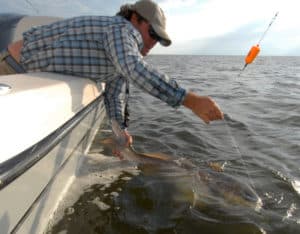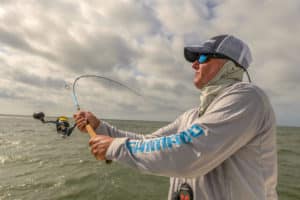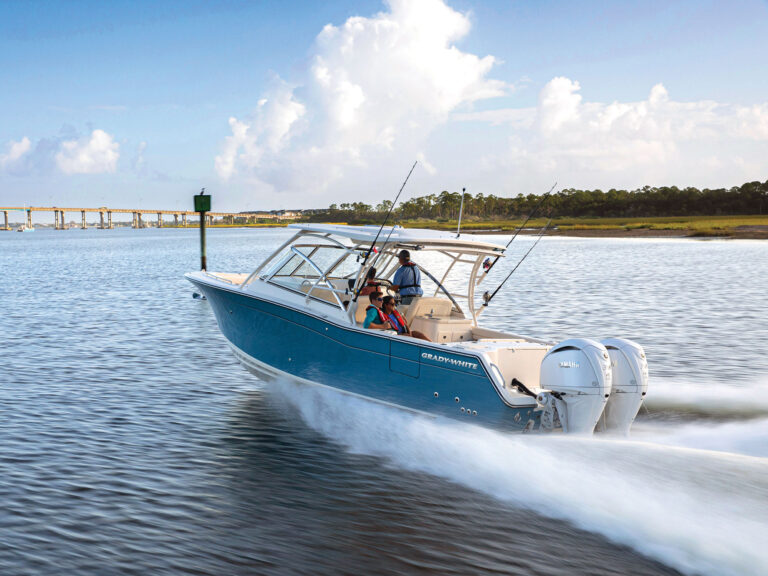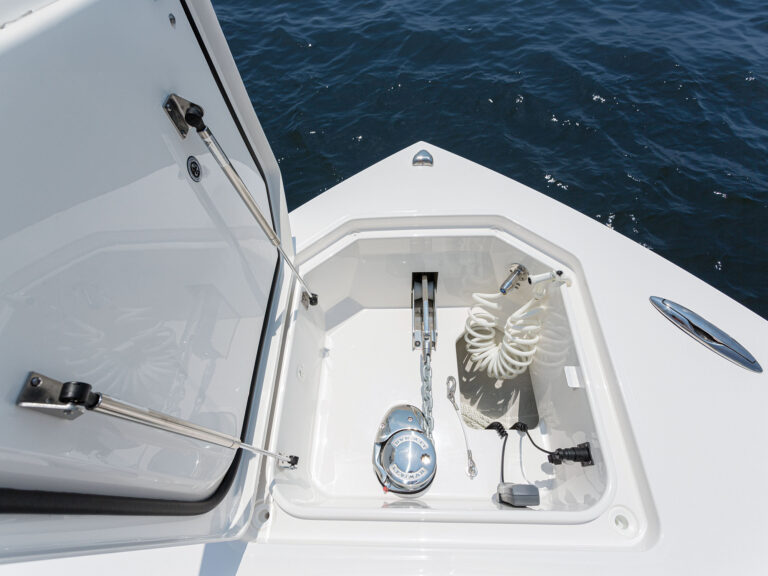
Capt. Wade Wells, of the Mexican Gulf Fishing Company in Venice, Louisiana, was itching to get back on the water. “We were off the water all last week, and you never know if the fish are where you left them,” he said.
In late August 2016, treacherous rains and overflowing rivers flooded many residents out of their homes, causing FEMA to declare 20 different Louisiana parishes disaster areas. Although the floods didn’t affect the entire state, the heavy storms sure did. Venice, located in Plaquemines Parish, didn’t see the high rain fall or floods, but its waters were churned like butter.
Our fishing trip, as part of a Cajun Fishing Adventures Media Bash, was partly an exploratory mission to find out which oil rigs were holding yellowfin tuna after the storms. Thankfully, the Mexican Gulf Fishing Company has a fleet of captains that work together on and off the water, communicating with each other which rigs are producing. A number of boats headed offshore the same day we did.
I set out to record the day in full, capturing each step along the way. Capt. Wells and his deckhand Chris Fotta were the brains, while fellow anglers and fishing industry friends Reid McKinstry, Jay Harris and Brian Evans provided the reeling muscle. From gathering bait, to deploying the trolling spread, to running and gunning to different rigs — the whole process isn’t too complex once you’ve done it as many times as Wells and Fotta. Check out the gallery below to get a true taste of southern-style Louisiana tuna fishing.
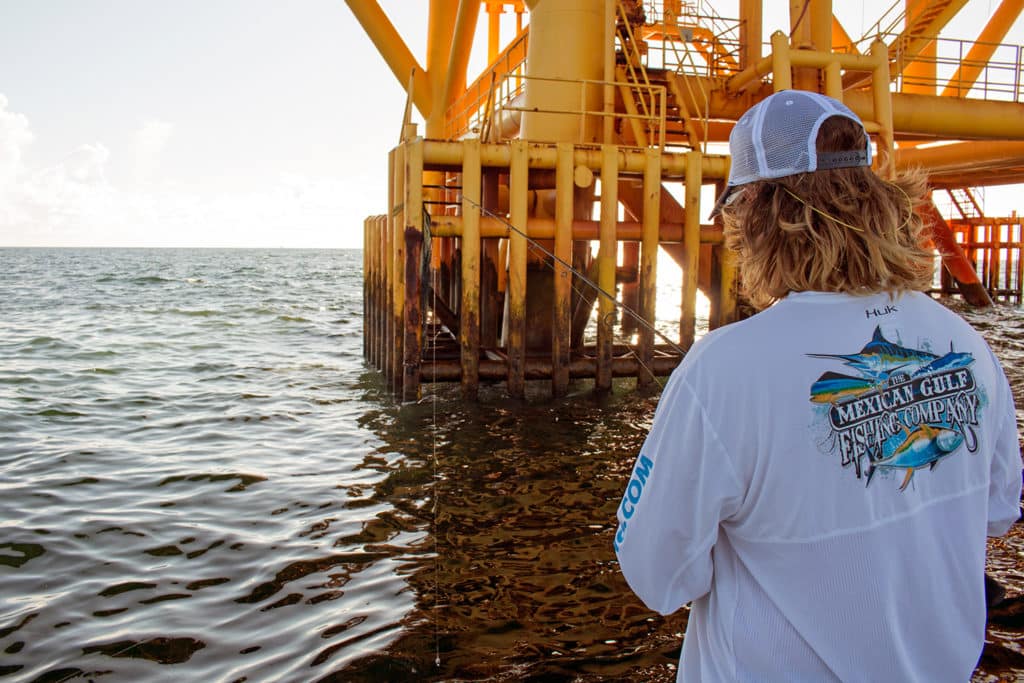
First stop on a trip offshore is to find live baits. Schools of threadfin herring are available some months of the year, but hand-size blue runners (hard tails) are more dependable most days. Mate Chris Fotta drops a sabiki near a platform to test the waters. If the rig has blue runners, he’ll get bit pretty quickly. But catching four or even five blue runners has its downsides too. First, the baits can tangle with each other or sinker. Second, sharks quickly home in on the struggling baits and trash the sabiki rigs.
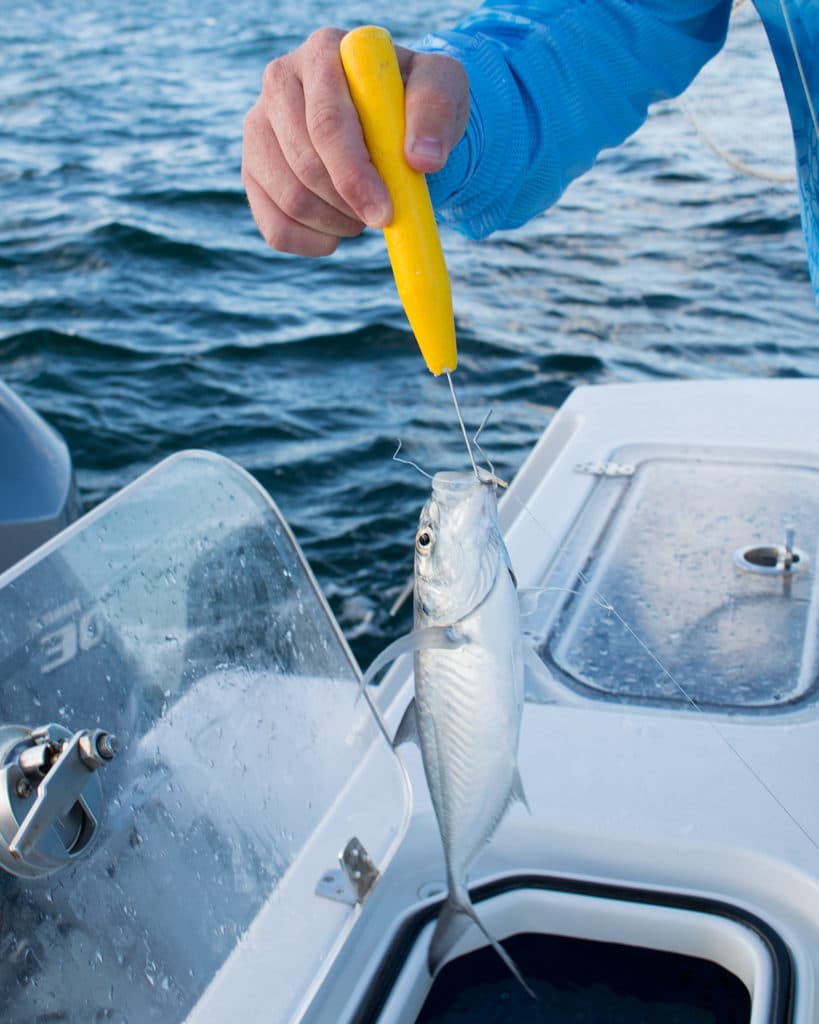
Although blue runners are fairly hearty baits, a hook remover quickly unhooks baits and allows them to fall directly into the baitwell. Savvy anglers hold the line tight while unhooking baits to prevent hard tails from shaking and tangling the sabiki rig. Capt. Wells had us catch at least 50 hand-size (or larger) blue runners before we headed to the deepwater platforms. There’s a definitive reason to overload the baitwells, which becomes apparent in an upcoming image.
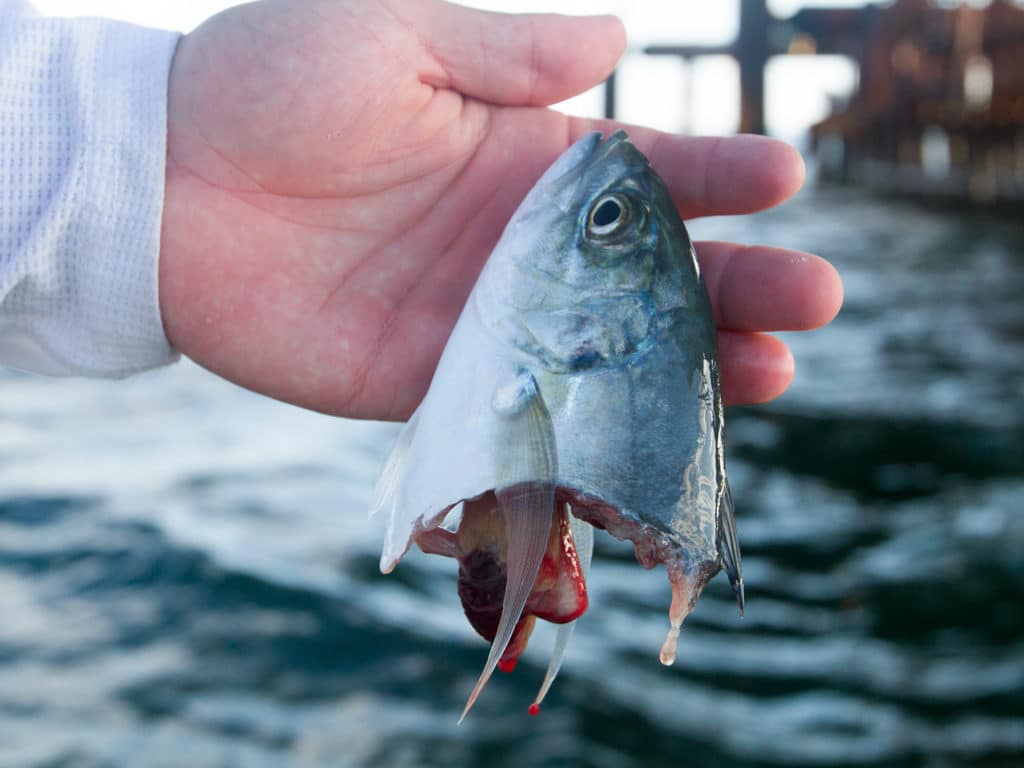
Expect a couple baits to get completely thrashed by sharks.

Capt. Wells positioned his Contender on the up-current side of the oil platform to mark fish on his finder. Spending a half-hour at the rig with nothing to show for it, we headed across the Gulf to a different one. Part of rig fishing is being able to adapt. Wells freely named each rig we fished, not trying to hide any secrets. Rigs don’t hold fish day after day; instead, “waves” of tuna come and go to different rigs based on conditions such as water clarity, current, wind direction and water temperature. While Wells might prefer blue water, he catches plenty of fish around rigs in green water.
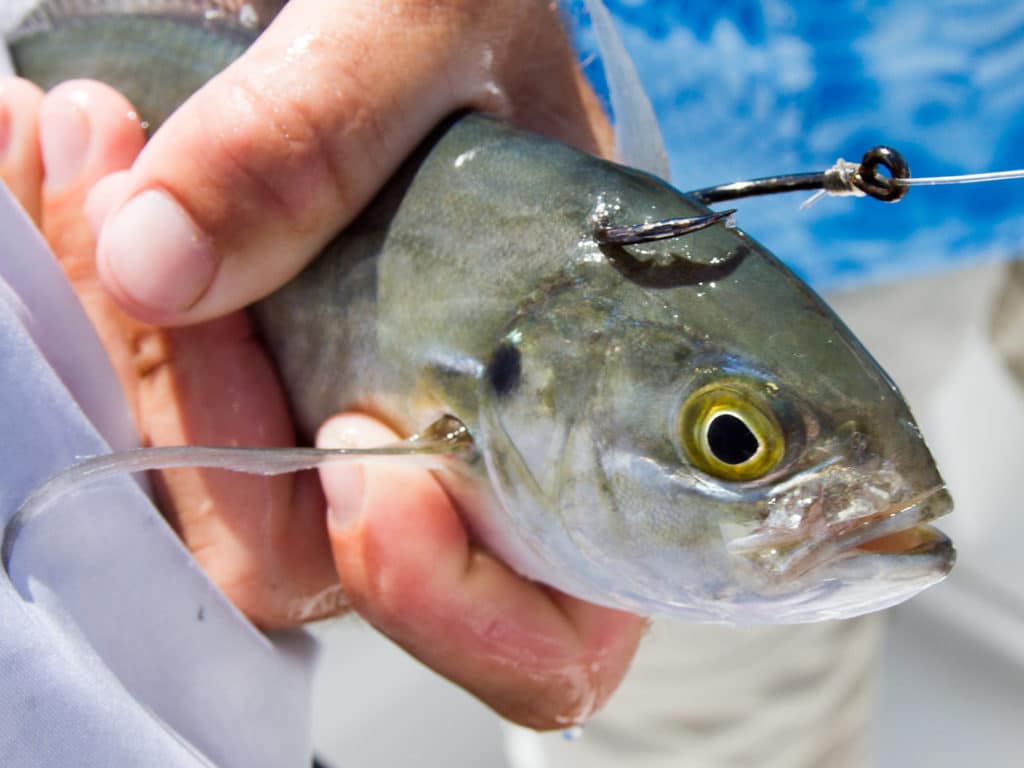
Rigging blue runners is a cinch. No bridling necessary out here (though I imagine a rubberband bridle rig wouldn’t hurt hookups). Fotta hooked a snelled Mustad Demon Perfect Circle 3X 7/0 into the shoulders of the runner. This placement keeps the blue runner near the surface when slow-trolling.

With fish marking on the finder at the Tinkerbell rig, Wells gets to work. He attaches a line to the ‘rigger clip for trolling. For our trip, each outrigger had a single line slow-trolled at the surface. Honestly, the riggers weren’t necessary except to keep the two baits from tangling. Fishing is so productive and reliable around the platforms that some of the more complicated trolling rigs and tactics aren’t necessary.
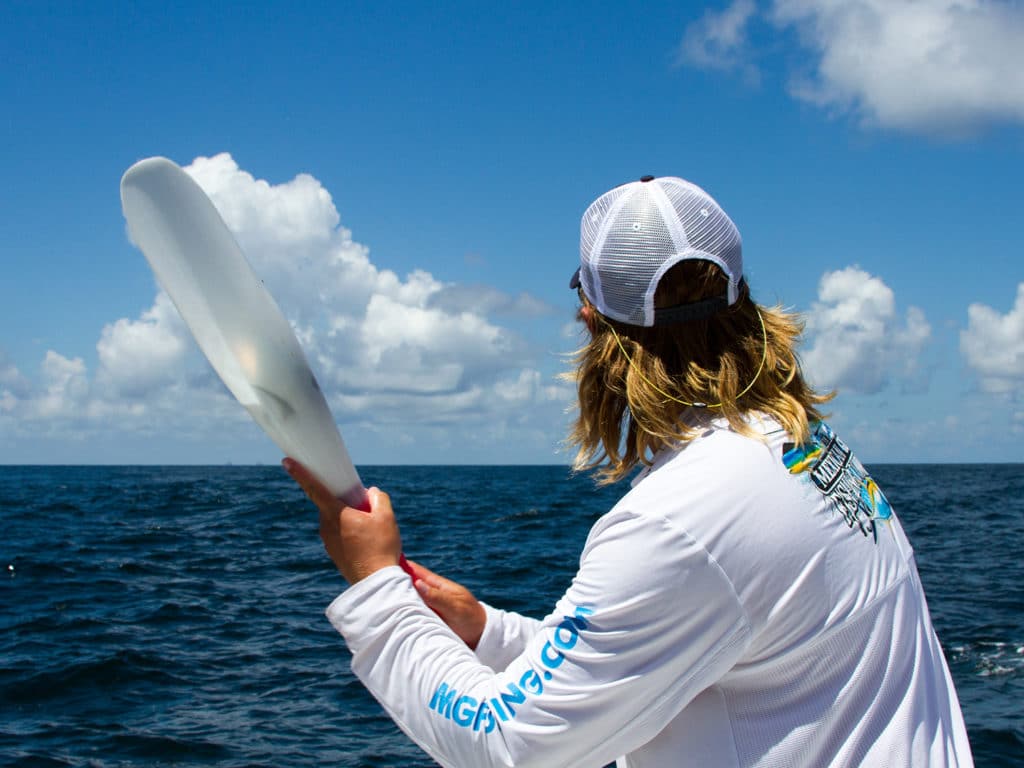
Fotta winds up a hollowed-out plastic bat filled with live baits and chucks the baits out behind the boat. Trolling past the Tinkerbell platform, the goal of live chumming is to bring suspended tuna to the surface. This is why it pays to have a ton of extra baits in the well. If the tuna are active, expect to see blowups behind the boat as tuna crash to the surface for a meal. It’s only a matter of time until a bait with a hook is chomped.
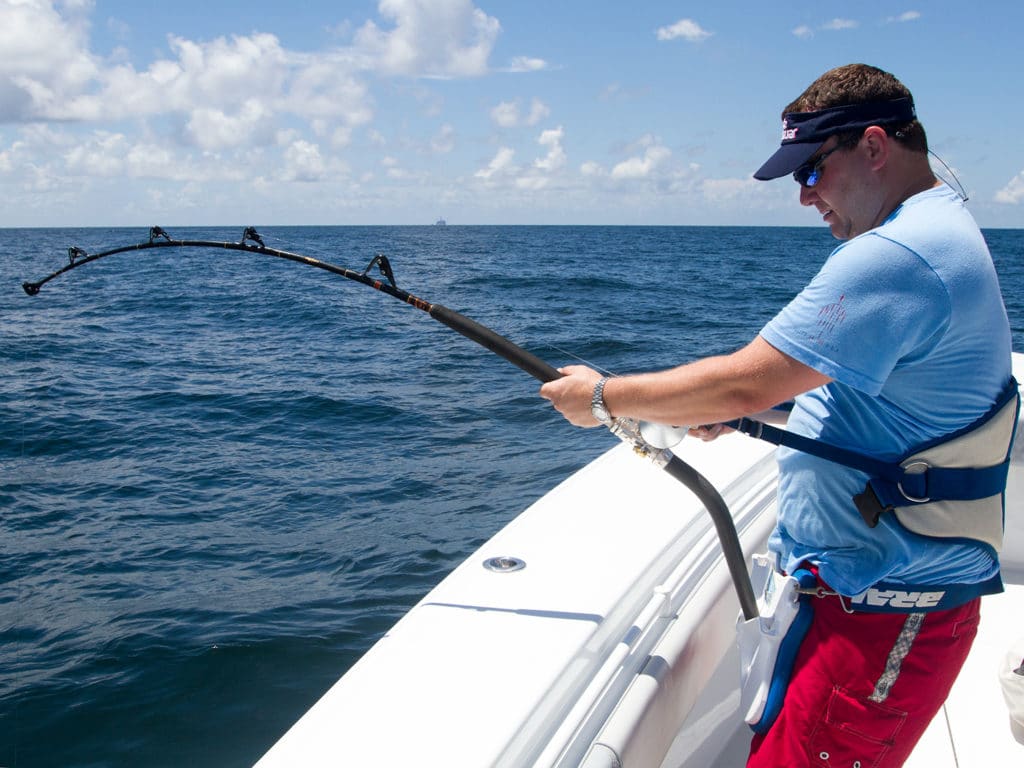
Seaguar’s Brian Evans fights the first tuna of the day. A fighting belt is necessary for larger yellowfins that can battle for drawn-out periods.

But the fight is worth it! Brian Evans, center, took down this 105-pound yellowfin tuna with 80-pound braid, 80-pound top shot and 80-pound Seaguar Premier fluorocarbon. Capt. Wade Wells (right) and Chris Fotta (left) provided help with the boat handling and gaff shot.
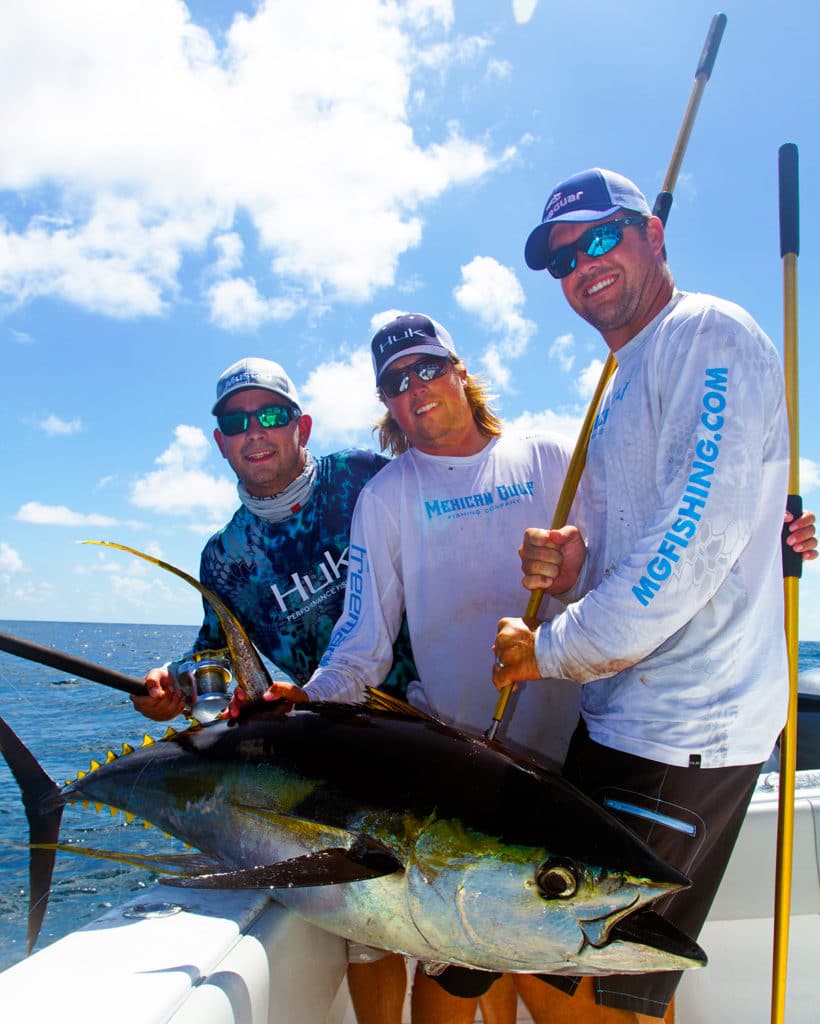
Next up, Mustad’s Jay Harris landed this 100-plus-pounder at the same Tinkerbell platform. Everyone on the boat saw his yellowfin attack a trolled bait at the surface, drawing stunned reactions. This fish was accidentally tail-wrapped from the start of the fight, shortening the fight time. “That’s cheating,”joked Fotta.

Unless the yellowfin tuna is undersized, anglers who target tunas in the Gulf don’t practice catch-and-release. Yellowfin tuna (ahi) is delicious just about any way it’s cooked and served. Plus, captains like those at the Mexican Gulf Fishing Company are cognizant of daily boat limits. Fishing’s done when the legal limit is reached. Many times, fishing is done before a limit is reached because there’s already enough tuna on ice and anglers are damned tired of pulling on bullish yellowfins. This yellowfin tuna makes one last jump boatside before being stuck by a gaff.

Mustad’s Reid McKinstry landed the last tuna of the day. All the fish caught on our trip were above the 60- to 80-pound average that’s common in the area.

Beanbags are a must-have for the ride offshore and the ride back home — rides to and from the offshore grounds tend to be at least two hours. The chairs allow anglers (five in this photo) to relax and sleep while traveling.

Back at the docks, tuna are loaded up in a wheel barrow and taken over to the fish-cleaning station. If an angler wants, Venice Marina offers a scale to weigh your catch. Other charter boats nearby re-fueled and prepped for tomorrow’s day of fishing.

Expect the unexpected at the docks. A boat that went deep-dropping for swordfish caught this pomfret. Pomfrets are a deepwater species hooked as bycatch when swordfishing or deep-dropping. The unusual-looking fish is safe and tasty to eat.

